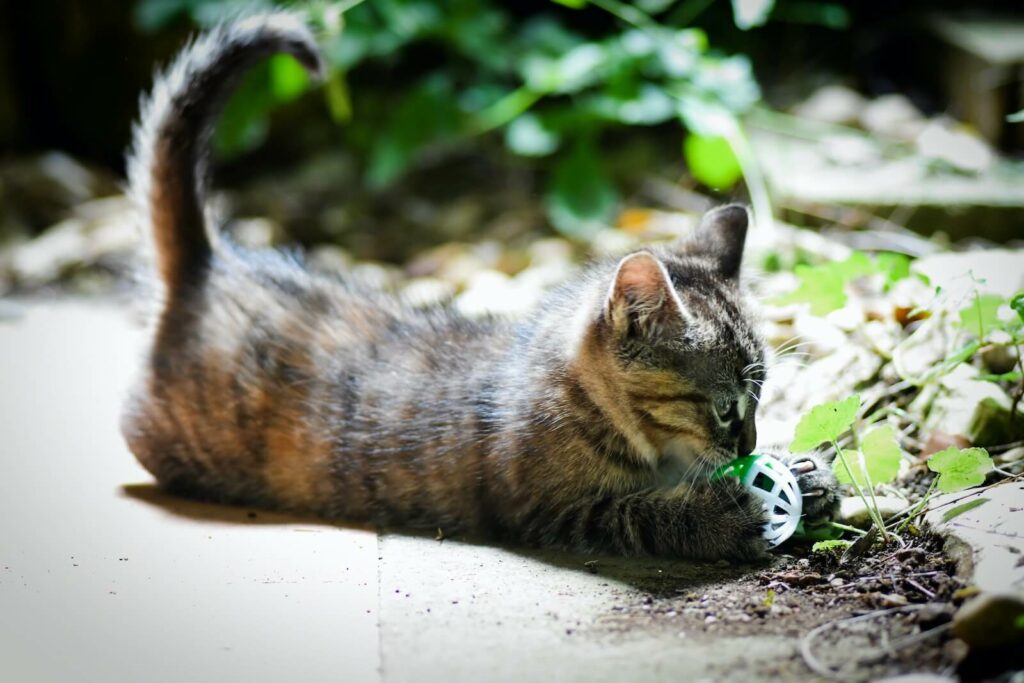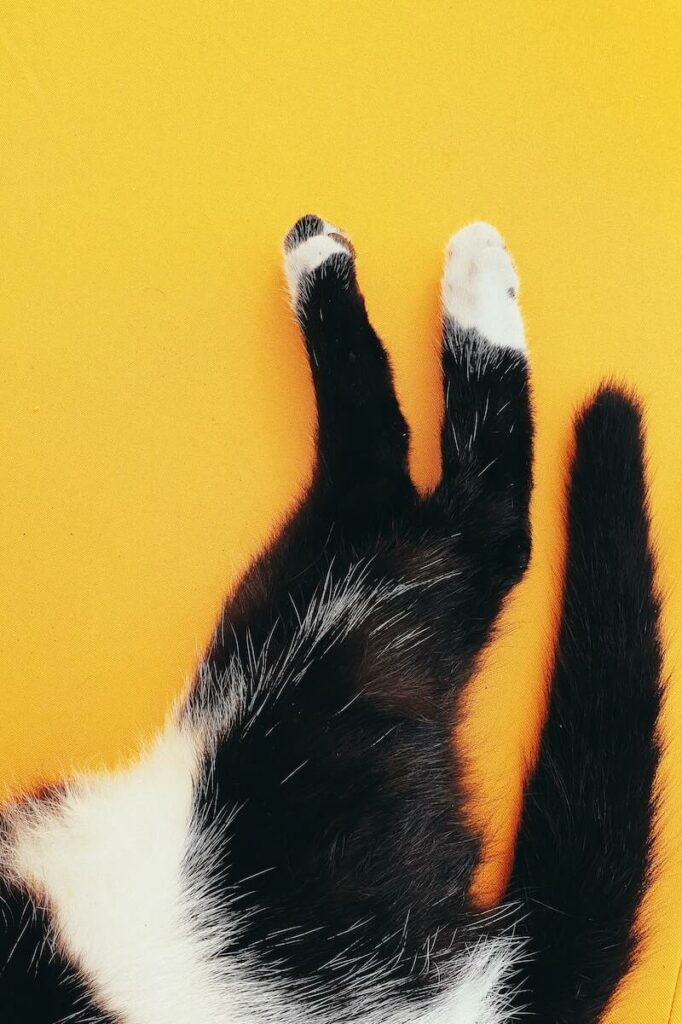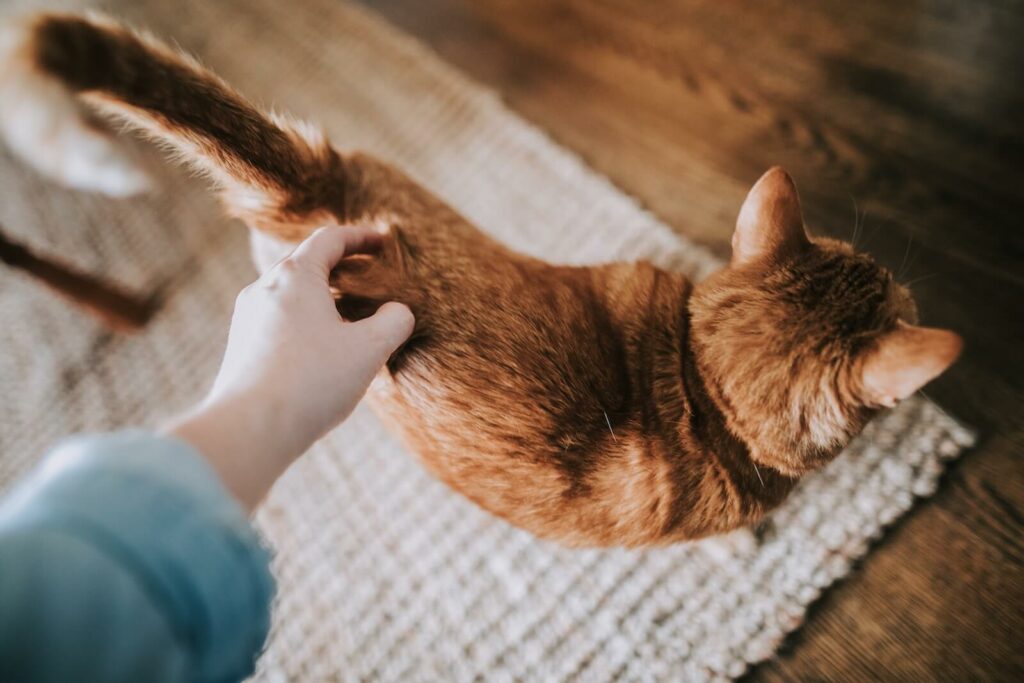Most of us cat parents understand what our cat means when he meows, purrs, or even rolls around on the floor, not to mention the icy stares he sometimes gives us. However, a cat’s body language goes far beyond the most apparent signals, from how they place their ears, the arching of their spine, and their tail movements. Everything can tell us a lot about our little furry one. Just as it is no coincidence that a cat growls when angry, it is no coincidence that it wags its tail in a certain way, depending on the situation. But can cats control their tails, or do they move involuntarily?
Unlike dogs, cats don’t wag their tails only when they are happy and excited. These buddies are a bit more complex because, unlike what you might think, cats can control their tail movements to convey different messages. To prevent you from having the same bad luck as me, I will explain everything you need to know about this vital part of your cat’s body to help you avoid at least a scratch or two.

Can cats control their tails?
Cats’ tails play a super important role in their daily life. It’s not just an ornament they can do without. The tail mainly helps them to maintain balance and coordination, especially when they jump and fall to the ground (I don’t think they are born acrobats, the trick is in the tail). It also allows them to communicate and express emotions, intervenes in bowel movements, protects certain exposed areas of the cat’s body, and helps them to thermoregulate. With so many essential functions, it is not surprising that they control most of the cat’s tail movements.
Although there are situations in which a cat may have involuntary tail movements, for example, when sleeping and dreaming, cats can control the direction and speed of the tail, from base to tip, and may even choose to wag or arch only the end of the tail. So if your cat hits you with his tail one day, he may just be doing it to annoy you. After all, they are experts at pissing off their favorite human.
How do cats control their tails?
A cat can control its tail because it is not just another limb with no function. No, it is an extension of its spine, which is connected to the brain. In addition to being able to control its movement, your cat’s tail is much more critical and delicate than you thought, as any injury could damage its spine and limit its ability to walk.
Besides having lots and lots of hair, the cat’s complex tail is composed of about 20 small bones covered with muscles, tendons, and ligaments that allow it to move and flex at will.
Why don’t cats like to have their tails touched?
Cats don’t like humans touching their tails because they have a lot of nerve endings, making it a susceptible part of the body. The level of sensitivity of the tail is such that they often use it to touch surfaces to determine if it is safe to walk on, for example, and it also functions as a sort of built-in thermometer, with which they can measure whether something is too hot or too cold.
This doesn’t mean it hurts when you touch their tail, but because your cautious cat prefers to avoid danger. And now that you know this, you’ll probably think twice before pulling your cat’s tail, and you’ll probably feel even worse every time you step on or jam your cat’s tail in a door, ouch.

Involuntary tail movements
Although cats often choose when and how to wag their tails, there are several occasions when the wagging may be involuntary. The most common reason is when they sleep like babies and dream, maybe they dream of climbing a tree or hunting a giant mouse, pay attention, and you will see how they move their paws and tail. Some even move their mouths and head as well.
Another reason this happens is because of reflexes. Cats, like us, also have many nerve connections throughout their body that often cause some part of their body to jump or move for no apparent reason. Picture the typical image of a doctor gently tapping your knee; it jumps up without any effort on your part, right? Well, the same thing can happen to your cat with its tail.
Meaning of a cat’s tail movements
Besides being an incredible tool for balance, the cat’s tail allows it to communicate different emotions. Below I will tell you which are the most common meanings. Maybe you have already identified more than one.
- Tail pointing to the sky: A cat with an erect tail is happy, confident, and friendly. If, in addition, the tip of the tail is slightly bent, it represents the maximum state of joy.
- Low tail: A stiff tail in a downward position means that the cat is furious, be careful because it can attack.
- Bristly tail: When a cat bristles its tail, the volume of the tail grows, and in this way, it tries to look bigger to intimidate. It means that it is very, very angry.
- Tail moving side to side: Beware, angry cat. The animal is warning that something is wrong. It is a clear warning.
- Hidden tail: If your kitten hides its tail or curls it under its body, your cat feels afraid or disappointed. As a general rule, the lower the tail, the lower the feline’s mood.
- Swaying tail: A tail that swings from side to side with slow, gentle movements indicates that the cat is calm and focused on something. This movement is expected when they are playing or hunting.
- Vigorous tail wagging: A tail wagging firmly back and forth is a mixture of fear, aggression, and anger. Be very cautious because the next movement could be a bite or scratch. The faster the tail wags, the unhappier it will be.

Can cats control their tails? Final thoughts
A cat’s tail is essential to understanding its mood and what it wants to tell us. Now you know that if your cat wags its tail, instead of hugging it, you should move away and let it calm down.
And although it is also vital for feline balance and coordination, some cat breeds, such as the Manx or the Japanese Bobtail, don’t have a tail, or well, they do. Still, it is as small as a rabbit’s, and surprisingly, these cats don’t have any problems when it comes to movement. In general, the anatomy of cats is incredible. Their bodies are designed to be the best ninjas in the world. Does your cat wag its tail? Please share your stories with us in the comments below!
